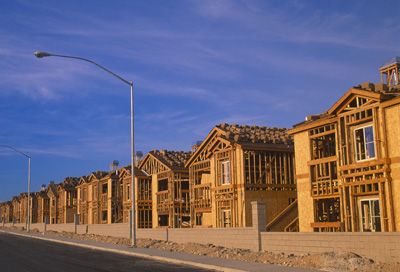If you're reading this article from the comforts of your recently purchased home, you aren't alone. From 2001 to 2005, the United States saw the largest housing boom since the 1950s. Low interest rates coupled with new-found wealth from growing technology industries helped usher in a wave of home restoration and new construction [source: Chicago Fed]. Eager house hunters and investors bought and sold real estate like never before. Along with these factors, lenders used clever loans to allow just about any gainfully employed individual to realize their dream of owning a home. One such practice is the interest-only (IO) loan.
The first thing that's important to understand about home mortgages is the difference between the interest and the principal. Lenders give homebuyers the money to purchase a house for a fee that's spread out over the duration of the loan. This is the interest. The principle is the actual amount of the loan.
Advertisement
Many people assume that an interest-only loan is a type of mortgage. In fact, an IO loan is an option that can be attached to any type of home mortgage. The interest-only option means that the scheduled monthly mortgage payment applies only to the interest part of the loan -- not the principle. It's an option because you can pay a portion of the principle if you choose to without penalty. The IO option runs for a set period of time, typically five to 10 years.
Another common assumption is that the IO loan is a recent creation to help kick-start the post-Sept. 11 economy. While IO loans have certainly become very popular in recent years, they're far from new. The IO loan has actually been around for a long time, having its first heyday in the 1920s. In those days, lenders handed out IO loans that had no set term, allowing homeowners to pay only on the interest for the life of the loan. At the end of the loan, the full amount would be due, and borrowers would typically refinance. Americans were keen to invest as much money as possible in the rising stock market, and the IO loan freed up the cash to do so. What no one could predict was the market crash of 1929. Homeowners saw their investments vanish and suddenly couldn't afford to pay their monthly house note. As a result, the foreclosure rate soared and many once-stable families found themselves homeless. This had a devastating impact on the economy and, coupled with the market crash, led to The Great Depression [source: MSN Money].
Interest-only loans made a big comeback in the early part of the new millennium and continue to be very popular today, despite the leveling real estate market. In this article, we'll look at how IO loans compare to standard home mortgages. We'll also look at whether or not this type of loan option is right for you.
Advertisement




